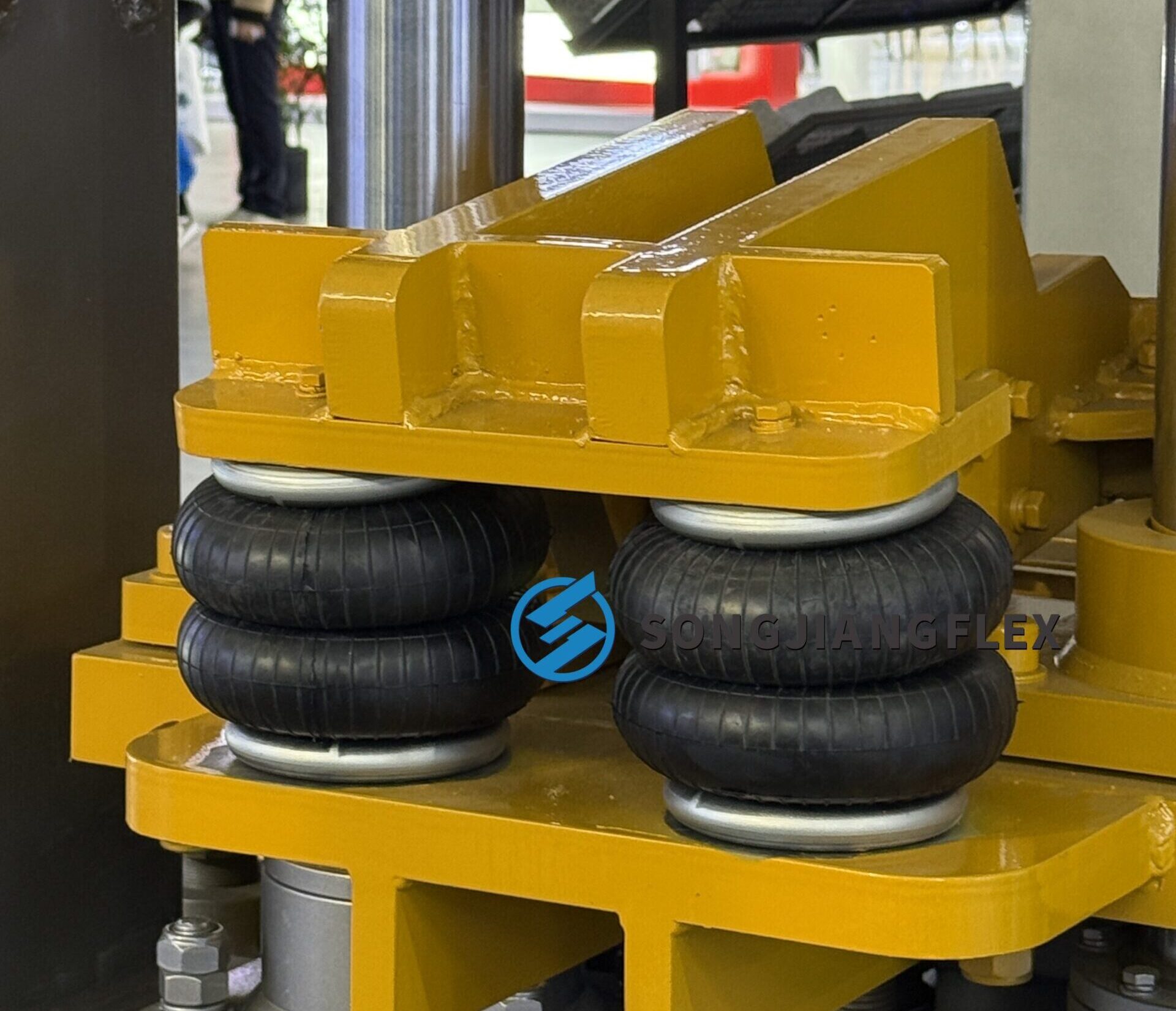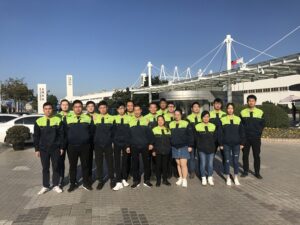What Makes Rubber Air Springs Ideal for Brick Making Machines?
Brick making machines generate repetitive, high-impact forces that can damage components and reduce efficiency. Rubber air springs act as dynamic vibration isolators, minimizing shock transfer to the machine frame. Their flexible structure supports consistent performance even under fluctuating loads. Rubber air springs are designed to dampen vibration, absorb shock, and withstand heavy-duty cycles, making them ideal for continuous-use machines like brick makers.
Rubber air springs are designed to dampen vibration, absorb shock, and withstand heavy-duty cycles, making them ideal for continuous-use machines like brick makers.
The use of rubber air springs perfect for brick making machines ensures smoother operation, better product uniformity, and less frequent downtime due to component fatigue.
What Are the Materials Used in Air Springs?
Air springs typically consist of a flexible rubber bellow reinforced with fabric layers, metal end plates, and air inlets. High-quality synthetic rubber, like EPDM or natural rubber, is often chosen for its elasticity, chemical resistance, and durability.
These materials give rubber air springs their signature ability to deform under load and restore shape without damage, essential for machines with vertical impact forces like brick formers.
This structure also distinguishes rubber springs from rigid steel springs, offering more flexibility, damping, and silent operation—vital for heavy industrial applications.
What Are the Different Types of Air Springs?
There are three main types of air springs used across industrial applications:
- Rolling lobe type
- Convoluted or bellows type
- Sleeve type
Each of these has unique properties suited to different dynamic loads. For brick machines, convoluted rubber air springs are often preferred due to their large deflection range and superior shock absorption.
Whether it’s a compact rubber air spring bot or a dual-convoluted air spring, the choice depends on the vertical stroke and vibration profile of the equipment.
What Are the Raw Materials for Spring Making?
Rubber air springs rely on the careful selection of raw materials:
- Elastomers like natural rubber or EPDM
- Reinforcement fabric (nylon or aramid)
- Metal components like zinc-coated steel or aluminum
These materials must endure heat, oil, water, and abrasion—especially in demanding industrial environments.
The rubber springs used in brick making machines must balance elasticity with resistance, ensuring long service life and stable performance even in rough working conditions.
What Material Makes the Best Springs?
While steel is traditionally used for coil springs, rubber offers distinct advantages for air spring applications:
- Quieter operation
- Better vibration damping
- Reduced rebound forces
In brick machines where repetitive vertical forces are common, rubber air springs and metal air springs are often compared. However, rubber spring types outperform in noise control and energy absorption.
The best material? For shock-intensive brick presses, it’s rubber—no contest.
How to Manufacture Springs?
Manufacturing rubber air springs involves precision engineering and advanced automation:
- Mixing rubber compounds
- Extruding and layering fabric-reinforced bellows
- CNC cutting for shape precision
- Molding and vulcanization
- Quality control and pressure testing
At Songjiangflex, our smart factory employs CNC systems, automatic batching machines, and in-house fatigue and burst testing to guarantee every air spring meets industrial-grade standards.
This air spring manufacturing process ensures performance, repeatability, and reliability—even under the toughest conditions.
What Are the Raw Materials for Making?
Beyond rubber, air springs incorporate several other essential materials:
- Reinforcement cords: Provide strength and flexibility
- Plastic or metal pistons: Maintain air volume
- Sealing compounds: Ensure airtightness under pressure
The durability of rubber air springs depends on this balance of engineered materials. Our rubber air spring products are built using high-quality inputs tested for both chemical and mechanical resilience—especially vital for dusty, high-vibration environments like brick production.
Summary
Rubber air springs are custom-built to handle the brutal impact of brick making machines—efficient, silent, and tough.






